Week Beginning 13.7.20 Reception Learning Overview
Dear Children, Parents and Carers,
It’s hard to believe that we are entering into our final week in Reception. I want to take this opportunity to thank you all for your amazing hard work and support over the year. It has been a pleasure to get to know you and I will miss you all.
Wishing you all a safe and happy summer,
Mrs Theo
Message from Mrs Carey, Year 1 teacher- Due to space and storage constraints, we do not have room for big, bulky school bags. Instead, please continue to use the book bag from Reception. Thank you.
Our final story focus is ‘Elmer’ by David McKee

Choose one or two things from each area to do over the week.
If you do not have a copy of the story, you can watch the author, David McKee, reading: https://www.youtube.com/watch?v=ZFrD18XLmlM
Personal, Social and Emotional Development (PSED)
- Discuss why Elmer didn’t want to be different.
- Why is it OK to be different from other people?
- How can we celebrate our differences like the elephants do on Elmer Day?
- An old elephant says to Elmer “It didn’t take you long to show your true colours.” Discuss what this expression means with your family.
Communication and Language
Things to discuss with your family:
- In what ways are all the elephants in the herd the same?
- In what ways are the elephants in the herd different?
- Elmer is a different colour to the other elephants but is he the same as the other elephants in any way?
- Is Elmer different to the other elephants in ways other than his colour?
- Why do you think Elmer is tired of being different? How can being different make you tired?
- Do you think that Elmer is happy when he is elephant coloured? Does it help Elmer to pretend to be something that he is not?
- When Elmer comes back to the herd he feels that something is wrong but when he looks around everything is the same? What is different that is making Elmer feel strange?
- Is it important to celebrate the differences between us, as well as the similarities?
- What do you think the world would be like if we were all exactly the same?
Physical Development
- Make a jungle-With the help of an adult, fill a large tray/ bucket with damp soil, and collect plants leaves, grasses and twigs to place in it. If you have plastic toy animals you could place them in the tray. Perhaps you could add colour sticky squares or dots to a plastic elephant to be Elmer. Tell the story of Elmer or make up your own stories.
- Create an elephant wash! Use some small-world elephants, some mud and some soapy water. Clean the muddy elephants! Use sponges, scrubbing brushes and pump soap dispensers.
- Create a jungle from construction or junk modelling materials.
Maths
Count how many….
- Berries are on the bush?
- The coloured patches on Elmer?
- How many elephants are in the herd?
- How many other animals are in the jungle?
- Look at the shapes and patterns on the decorated elephants. Do any of them have repeating patterns, symmetry, or tessellation?
- Make repeated patterns using different square designs.
- Go on a square hunt around your home.
Literacy
- Write a message to Elmer from the other elephants. Talk about what they might want to say to him. For example that they like him just the way he is or that they find him really funny.
- Read more books by David McKee.Other Elmer books include:Elmer’s Colours, Elmer’s Friends, Elmer’s Day, Elmer and the Rainbow
David McKee has also written and illustrated many other popular books; titles include:* Not Now Bernard, Two Monsters, King Rollo, Mr Benn
- Write an invitation for an Elmer’s Day celebration.
- Write about why you are one of a kind.
Phonics- It is highly important that your child practises their letter sounds and tricky words and applies them through a reading and writing activity daily. Reading will help improve their vocabulary and a child’s academic success depends upon the ability to read and write and so this should be a priority.
Please continue to practise all letters sound and tricky words taught to date. They need to be able to recognise and write all phase 2 and 3 sounds in order to get off to a really good start in Year 1. If you download a sheet such as this https://www.twinkl.co.uk/resource/t-l-1972-phase-3-phonics-letters-and-assessment-sheets then you can assess your child to see which sounds your child knows securely, and which sounds need revising.
Understanding the World
- What is a jungle? What lives there?
- Use an atlas or a globe to look at places around the world where there are jungles and where elephants live in the wild.
- Find out about different types of elephants.
Expressive Art and Design
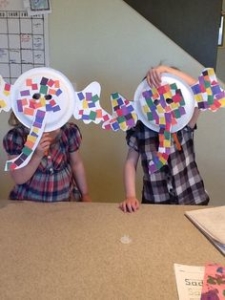
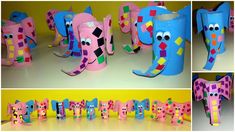
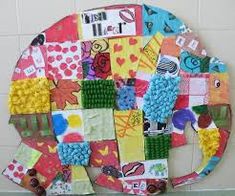
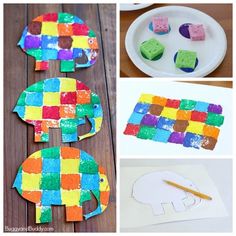
- Look at different photos of elephants and draw your own.
- How many different colours can you think of? Explore mixing colours to make new ones.
- Make a patchwork picture inspired by the artist Kadinsky. Cut out coloured squares from a magazine, arrange the coloured squares in a patchwork design and stick on a sheet of paper.
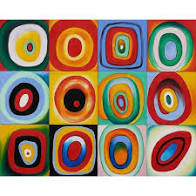
- Decorate an elephant like the ones joining in the Elmer parade. If you make several you could cut them out and hang them on a string suspended across a wall or ceiling to create a line of elephants on parade.
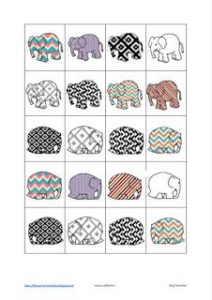
- Make some Elmer ears or a trunk.

- Make an Elmer lantern from a plastic milk bottle and tissue paper.
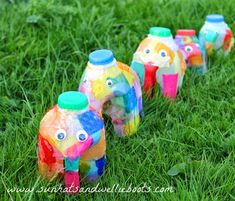
- Bake and decorate some Elmer biscuits.

RE
To show that RE is a special learning time, we always light a candle to mark the beginning of lesson and ask ‘Who is with us when we light the candle?’ and ‘Who do we learn about in our RE lesson?’
We then say the school’s Mission Prayer together.
Please see the separate RE blog for the whole school learning focus and complete the activity. Thank you!



Leave a Reply
Want to join the discussion?Feel free to contribute!